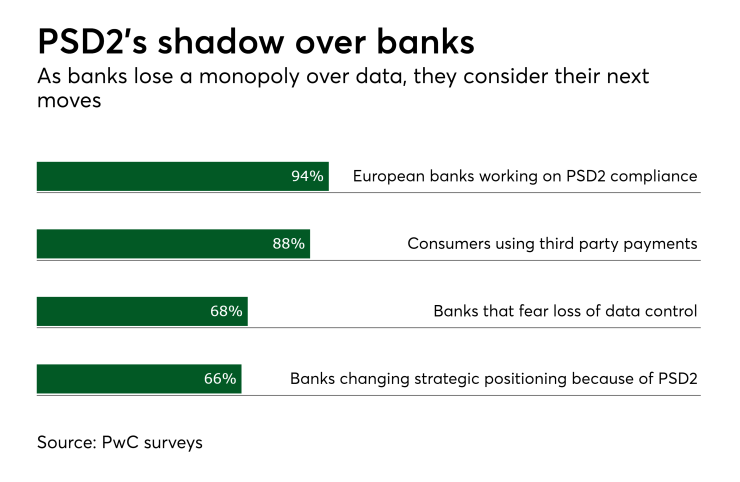The introduction of the EU’s PSD2 regulation marks the start of a highly positive change for the finance and accounting industries: a move toward a more efficient and secure digital future and more valuable customer service. At its heart, PSD2 is designed to drive innovation for today’s digital consumers, all while giving them more control over their data.
The benefits for banks are obvious: higher-quality banking data, faster responses to customer feedback, higher levels of security and reduced fraud. The picture is similarly positive for their customers: increased privacy rights, greater competition among financial services providers leading to reduced costs and more flexible ways to bank and make payments.
PSD2 will help to bring financial regulations up to date for a world that has gone fully digital. The many benefits of digital technology are long due in the finance and payments industry – and indeed we’ve already seen the rise of highly effective tools like online banking and in-app account management. PSD2 goes deeper, though – it changes the fundamental culture that governs interactions between banks and their users.

Such sweeping change always has its teething problems, and as a result, there are some practical issues that need to be addressed to ensure smooth running in these first months post-PSD2 deadline.
It’s important that businesses don’t have to take on the full administrative workload of changing the way their systems work and comply with PSD2. By working with an experienced technology partner, companies can get full access to their usual functionality during the change and keep up to date with any further changes – without having to get into the nitty-gritty of APIs and authentication measures.
Make no mistake: PSD2 is a positive step. Change can often feel outfacing, but it won’t be long before PSD2 is simply "the way we do things around here," and banks and customers alike begin to see the benefits on a regular basis. The future of banking and payments is digital, and consumers demand more flexible, tailored services. If banks and customers take steps to quickly adapt to the change now, the benefits will soon be realized.





